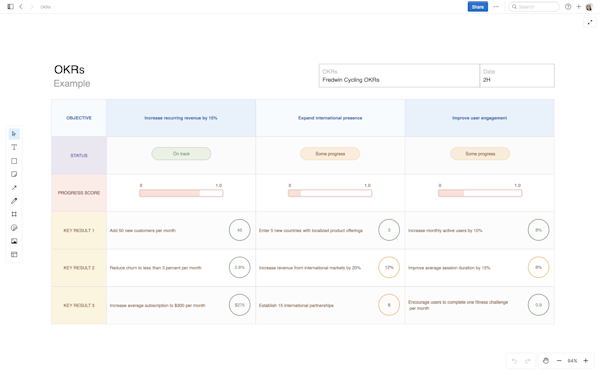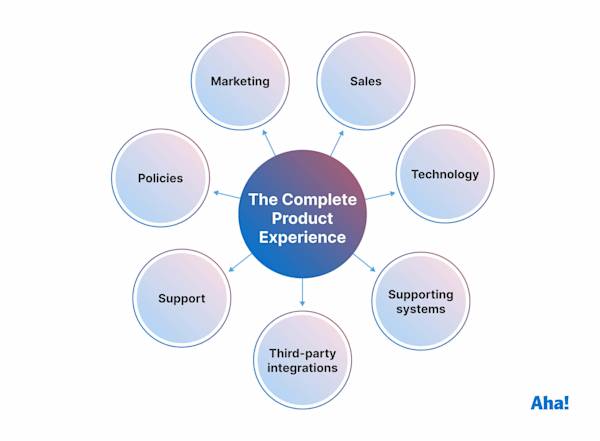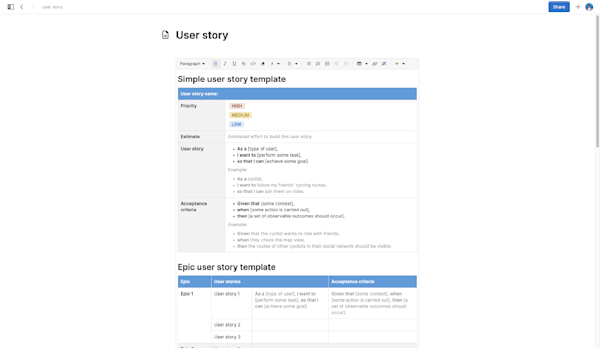This evolution is part of what makes product development so exciting: Endless possibilities exist to create new offerings for all kinds of customers. But it helps to begin with a solid understanding of what makes up a product, which products exist today, and the essential role customer experience will always play. That is where this guide comes in.
Feel free to jump ahead to any section here:
Product definition: What is a product?
A product is a tangible or intangible item that solves a need or delivers a desired outcome for a customer. It can be sold, licensed, or exchanged for value. Products may take many forms, including physical goods, software applications, services, or hybrids.
Examples of products
To understand the variety of products that exist, consider these examples:
Physical product: A reusable water bottle
Digital product: A video editing app
Hybrid product: A smart home device with a companion mobile app
Service product: A monthly meal delivery subscription
Experience product: A ticket to a concert or sporting event
Each of these offers a solution, benefit, or experience that someone is willing to pay for. That is what makes it a product.
Top
Product characteristics and what customers look for
Size, shape, performance, price, and functionality — these are just a handful of attributes customers might consider before purchasing your product. Product characteristics vary depending on the product type, industry standards, and consumer preferences. Businesses often prioritize a product's attributes based on their target markets and competitive landscapes.
Though product characteristics vary widely, a few basic ones are universal. A product is:
Intended for customers: This differentiates products from projects or anything else you might produce for your own use or enjoyment. Products are typically created to be sold and consumed by someone else, whether that is an individual consumer or a business.
Created to provide benefits to a market: Identifying and meeting a market need can be challenging. But at a base level, a product should provide some advantage to users.
Exchanged for value: The most typical value exchange is money — meaning products have a price and can be bought and sold. In some cases, products are offered in exchange for feedback, exposure, trade, or other forms of value.
In addition to basic characteristics, each product has desirable attributes from the customer's point of view. Common examples include:
Quality: Superiority of the product
Durability: Ability to withstand wear and tear
Functionality: How well it performs an intended purpose
Reliability: Consistency in performance and dependability over time
Design: Aesthetics, style, visual appeal
Usability: Ease of use/user friendliness
Safety: No risk or hazards from using the product
Compatibility: Ability to work with other products
Customers also consider other attributes (such as size, material, and packaging), especially when it comes to physical products. For larger-ticket product offerings — such as a car, laptop, or software suite — things like brand, price, warranty, customization, and customer support also factor into a customer's purchasing decisions.
Related:
Top
Different product types and audiences
Products come in many forms — and who they are built for matters just as much as what they do. As a product manager, understanding the differences between consumer, business, and industry products can shape how you design, deliver, and transform your product.
Many products are split among three major customer categories: consumer, business, and industry. Consumer products are designed for individual and personal use, business products are used by businesses in their operations or production, and industry products are customized to meet the needs of a specific vertical (healthcare, for instance).
Understanding the differences among all three categories is key for product managers. It helps you craft better market strategies, design user-friendly products, choose the proper sales channels, and comply with regulations. Plus, this knowledge can guide your career path and help you specialize and advance.
Consumer products
Consumer products, or business-to-consumer (B2C) products, are sold to end users and intended for personal use. The B2C product category is commonly broken down further by purchasing behavior:
Purchasing behavior | Description |
Convenience | Purchased frequently and with little planning or effort Examples: Magazines, on-demand services |
Shopping | Higher price, purchased with more consideration Examples: Clothing, airline tickets |
Specialty | Niche appeal, often more expensive Examples: Banking applications, vertical market software |
Business products
Business products, or business-to-business (B2B) products, help companies operate or create their own offerings. These include raw materials, equipment, services, and software — including SaaS tools for project management, accounting, or customer support. Buying decisions often hinge on trial access, positive reviews, and clear pricing.
B2B customers typically take a more deliberate approach to purchasing. Key considerations include:
Free trials and demos: Businesses want to validate functionality and fit before buying.
Social proof: Reviews and testimonials from other organizations help build trust.
Clear pricing and contracts: Transparent terms reduce friction and support long-term relationships.
Flexible return policies: Warranties or guarantees help reduce perceived risk.
Personalized sales: Buyers expect vendors to understand their specific needs and offer tailored solutions.
Industry products
Also known as vertical market products, these are tailored solutions built for specific industries. They often include features, integrations, and compliance standards that reflect the unique needs of a sector. Developing these products requires domain expertise and close collaboration with industry stakeholders.
Examples include:
Energy: Control systems for power distribution
Healthcare: Electronic health records software
Finance: Risk and compliance management tools
IT: Network security for regulated environments
Whether you are building for individuals, businesses, or specialized industries, your product must solve a real problem in a way that your audience understands and values.
Top
Why product definition matters
Getting your product definition right is critical. It shapes how you position what you are offering, what customer problem you are solving, and how your team builds and delivers value. Strong product definition helps everyone — from product managers to marketers — stay aligned on what you are trying to build and why it matters.
Once your product is defined and you are ready to start building, check out the video below. Aha! experts Austin and Bonnie share our team's approach to working together to deliver lovable products.



